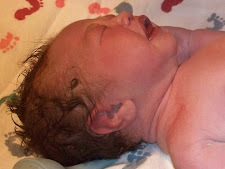As what all mothers says, raising a child is not an easy job as they came without manual, or instructions. Every stages of their childhood brings joy and trouble at the same time. One behavior of a child that is not so pleasant is the temper tantrums. Oh boy! We are still facing this kind of thing with Jake and seems like Justine already doing her own share of tantrums. A tantrum is your child's way of asking for help. He is upset and does not know how to help himself. He needs you to help him learn self-control and find ways to solve problems.Image source
When Your Child Has a Tantrum, he needs your help to calm down. You may need to pick him up and take him away from the problem. You can also try to distract him with something else to do. Some toddlers need a firm hug. And some do best with a few minutes of "time-out" in a quiet, safe place. If these things won't work ignoring them while having their meltdown may also help. Once he is calm, pick him up and give him a hug. At age 4, kids already have self control and understand words. They know how to calm themselves when they are having a meltdown and they can also express what they want or needs.
Characteristics of Temper Tantrums
All young children from time to time will whine, complain, resist, cling, argue, hit, shout, run, and defy their teachers and parents. Temper tantrums, although normal, can become upsetting to teachers and parents because they are embarrassing, challenging, and difficult to manage. On the other hand, temper tantrums can become special problems when they occur with greater frequency, intensity, and duration than is typical for the age of the child.
There are nine different types of temperaments in children:
* Hyperactive temperament predisposes the child to respond with fine- or gross-motor activity.
* Distractible temperament predisposes the child to pay more attention to his or her surroundings than to the caregiver.
* High intensity level temperament moves the child to yell, scream, or hit hard when feeling threatened.
* Irregular temperament moves the child to escape the source of stress by needing to eat, drink, sleep, or use the bathroom at irregular times when he or she does not really have the need.
* Negative persistent temperament is seen when the child seems stuck in his or her whining and complaining.
* Low sensory threshold temperament is evident when the child complains about tight clothes and people staring and refuses to be touched by others.
* Initial withdrawal temperament is found when children get clingy, shy, and unresponsive in new situations and around unfamiliar people.
* Poor adaptability temperament shows itself when children resist, shut down, and become passive-aggressive when asked to change activities.
* Negative mood temperament is found when children appear lethargic, sad, and lack the energy to perform a task.
Source:NASP Resources














0 comments:
Post a Comment